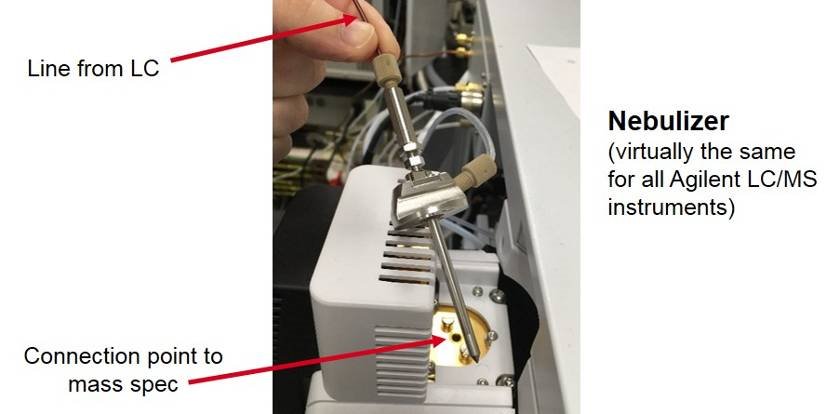Last time we looked at the impact that a metal-free flowpath can have in successfully monitoring “sticky” metabolites such as some TCA cycle compounds, polyamines, or phosphate-containing metabolites. I left you with a bit of a tease for this week’s subject – deactivating the metal surfaces of a stainless steel LC. When you don’t have the option to use another LC, the best workaround is deactivation to block the interaction between your sample and the surface metals. Is it an ideal solution? No. But it will help you get the job done.
Before we get into how, the first thing I’m going to say is do not run phosphate (in the form of phosphoric acid in this case) into your mass spectrometer. Got that? I’ll probably say it another half dozen times. Run any phosphate solutions into waste, and not into the mass spec, even if there’s a divert valve!
Ok, with that covered (for now), a couple of general notes to start:
- Deactivate as much of the flowpath as possible – the LC, the column, and the nebulizer of the mass spec, if you can. Disconnect the nebulizer from the MS source and let the solutions drip into a waste container.
- Do not run phosphate into the mass spectrometer!
Here’s a photo of the nebulizer on an Agilent 6230 accurate-mass time-of-flight LC/MS system with an Agilent Jet Stream ESI source. The nebulizer is nearly identical on any Agilent ESI source. This is where you should disconnect it from the instrument and let it hang into a waste container.
A brief description of this protocol is below, but I recommend reading this technical note for full details (as well as some great tips for HILIC separations in general).
- Disconnect the nebulizer from the MS, and let it hang into a waste container.
- Purge LC system with water at 5 mL/min for 5 min.
- Flow with water at 0.5 ml/min for 30 min.
- Change the flow rate to 0 mL/min and switch the solvent to 0.5% phosphoric acid (in 90% ACN/10% water).
- Purge LC system with 0.5% phosphoric acid at 5 mL/min for 5 min.
- Flow at 0.1 mL/min overnight (at a minimum).
- Purge with water at 5 mL/min for 5 min.
- Flow at 0.5 mL/min for at least 1 hour.
- Purge with mobile phase at 5 mL/min for 5 min.
- Flow at 0.25 mL/min for 1 hour.
- Reconnect LC/nebulizer to MS and proceed with analysis.
Here are chromatograms of adenosine phosphate compounds showing the improvement in peak shape that can be had by deactivating the system. You’ll also see the incremental improvement made by including the column, and removing metals from other aspects of the system (tubing and solvent bottles).
This protocol uses a relatively dilute phosphoric acid solution, and we know that it won’t damage Agilent LCs (though I wouldn’t leave the system sitting in this solution at zero flow). If you’re using an LC from another vendor, please consult with them before using this protocol. And one last time, do not run phosphoric acid into your mass spectrometer!
One final tool to improve chromatography of these challenging analytes on metal LCs is the InfinityLab Deactivator Additive. It's a simple addition to your HILIC mobile phase. You can learn more in the user guide here.
Until next time –
Anne
Keywords: Bio columns, liquid chromatography, tips and tricks, HILIC, spent media analysis, AdvanceBio blog


